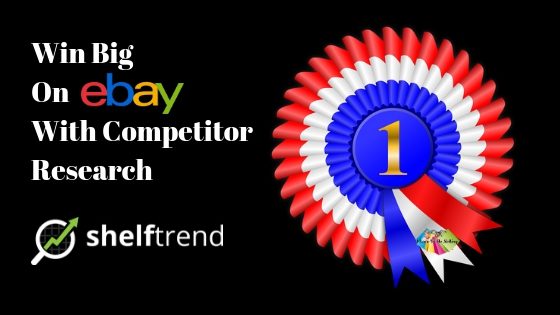Ecommerce has come of age in the last few years. It’s no longer a novel way of shopping; it’s the norm. As a result, eBay and all sites are becoming increasingly competitive.
This is true in every category. So how do you continue to thrive and prosper in your business on the eBay marketplace?
To begin, the answer is deceptively simple: Sell what shoppers want to buy, and do so in such a way that you stand out from your competition. That’s where marketplace research comes in. For hobby sellers, marketplace research can actually be as simple as using eBay’s Advanced Search to filter results to show only Sold items. My YouTube video explains how to use advanced search this way.
But checking eBay for data on sold items has two limitations: First, the data goes back only a couple of weeks to 30 days at most.
Second, there is no easy way to analyze those sold listings for using best practices pertaining to selling your product.
Fortunately, there are tools available that let you take a deeper dive into marketplace research. One of those is Terapeak, which was recently purchased by eBay. In addition to letting you view average selling prices for as long as two or three years back in time, Terapeak crunches eBay data to help you find the best keywords and categories for your items.
But professional eBay marketplace sellers want more from their research! They want data on their competition! Also, sellers looked for a tool with real-time data.

eBay marketplace sellers need real-time competition research.
Enter the robust seller tool ShelfTrend , created just two years ago by longtime eBay employees Lisa Wong and Anojan Abel.
ShelfTrend is super easy to use and provides their data in real time. That can be a huge advantage in letting you spot emerging trends early on, which is especially important during the holidays.
For example, if it looks like Raggedy Anns are going to make a comeback as this year’s hottest Christmas gift, you can run to your local outlet store and stock up right away. You can also source goods on the wholesale site BULQ. They sell inventory by the case and/or pallet with manifests. On the other hand, if it seems that the market for Acme Widget-Go-Rounds is starting to cool off, you might want to hold off buying that shelf of them at your local thrift shop.
ShelfTrend also enables you to keep an eye on your competition.
First, it shows you the top listings in Best Match search results by category or keyword. Then it helps you analyze those listings to glean insights into what’s making them convert so effectively: what keywords are those sellers using; what do they include in their descriptions; which item specifics are they using; how do their pictures look; and more.
This video from ShelfTrend explains how this works.
Knowing what works to sell your product is key to growing your business.
But it’s not enough to merely copy your competition’s successful strategies. Being the 10th seller to offer a product doesn’t add value to the marketplace; instead, take it one step further and figure out ways to stand out from your competition. Maybe it’s offering free returns, or setting a 60-day return window instead of just 30 days. Do your marketplace research homework, then put on your thinking cap.
For starters, ShelfTrend’s New Listings report can help you spot new competitors.
That’s invaluable all by itself because eBay is too dynamic a marketplace for you to just sit back and relax, thinking you’ve got a lock on your niche. What’s more, ShelfTrend’s Supply Demand report reveals areas where competition is low and/or where in-demand products are in short supply. That gives you the chance to pioneer a new niche — or maybe even develop a private-label product.
ShelfTrend offers a free version for basic research.
But with helping you find new hot items and saving you money on those that are cooling off, at $14.99/month for the full monty, ShelfTrend should more than pay for itself each month. Using a more sophisticated, yet easy to use tool like ShelfTrend, you’ll find that marketplace research literally pays off. Additionally, it’s kind to sellers’ bank accounts with no need to opt into a costly yearly commitment.
The bottom line is that in today’s uber-competitive marketplace, you can’t afford not to have this kind of information at your fingertips — especially when it’s so readily available.
You can bet that at least some of your competitors are taking advantage of it, and you should, too!


